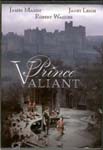

PRINCE VALIANT
BEFORE THE FILM
The film is in Cinemascope, a wide screen process that gives the image greater width than was standardly the case. The image on the screen is given in its aspect ratio.
ACADEMY FRAME
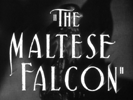
In 1889 Thomas Edison developed an early type of projector called a Kinetograph, which used 35mm film with four perforations on each side. The frame area was an inch wide and three quarters of an inch high, producing a ratio of 1.37:1.
1932 the Academy of Motion Picture Arts and Sciences made the Academy Ratio the standard Ratio, and was used in cinemas until 1953 when Paramount Pictures released Shane, produced with a Ratio of 1.66:1 on 35mm film.
TELEVISION FRAME

The standard analogue television screen ratio today is 1.33:1. The Aspect Ratio is the relationship between the width and height. A Ratio of 1.33:1 or 4:3 means that for every 4 units wide it is 3 units high (4 / 3 = 1.33).
CINERAMA

In the 1950s, Hollywood's attempt to lure people away from their television sets and back into cinemas led to a battle of screen sizes. Fred Waller of Paramount's Special Effects Department developed a large screen system called Cinerama, which utilised three cameras to record a single image. Three electronically synchronised projectors were used to project an image on a huge screen curved at an angle of 165 degrees, producing an aspect ratio of 2.8:1. This Is Cinerama was the first Cinerama film released in 1952 and was a thrilling travelogue which featured a roller-coaster ride. See Film Formats.
CAMERA 65 ULTRA PANAVISION
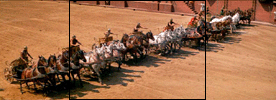
In 1956 Metro Goldwyn Mayer was planning a massive remake of their 1926 silent classic Ben Hur. Widescreen systems were still new and they drew audiences. MGM wanted to film Ben Hur in the best available system . MGM approached Robert Gottschalk, the president of Panavision, Inc., and asked him to design a system that did not suffer the distortions created by the anamorphic lens. The result was Camera 65 later changed to Ultra Panavision 70.
CINEMASCOPE - 55
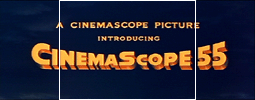
20th Century Fox experimented with other anamorphic formats and in 1956 released Carousel which was originally shot on CinemaScope 55 using 55mm film and reduced to anamorphic 35mm.
CINEMASCOPE - PANAVISION

The Robe was the first film released with a new system called CinemaScope in 1953. Developed by Professor Henri Chretien and copyrighted by 20th Century Fox, the CinemaScope image was photographed on standard 35mm film with an Anamorphic Lens. When projected in the cinema through another anamorphic lens, it produced a ratio of 2.35:1 and a screen size that was two and a half times the size of the conventional screen aspect ratio of 1.33:1. CinemaScope, or Panavision as it is now called, is the most common format shown in cinemas today.
TODD-AO
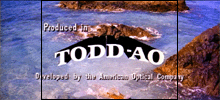
In the early 1950s producer Michael Todd, one of the original partners of Cinerama, played an important role in Hollywood's widescreen rush in the wake of TV competition. With movie mogul Joseph Schenck he announced the formation of the Magna Corporation. Together they exploited the 65mm widescreen process and developed a system named Todd-AO. Todd-AO is a 70mm film process with a ratio of 2.20:1and six track magnetic stereophonic sound. It projected faster than the normal at 30 frames per second rather than 24 frames per second. Their first production was Oklahoma released in 1955.
METROSCOPE
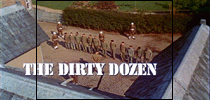
Many film companies experimented with Widescreen formats, In 1958 Metro Goldwyn Mayer produced Dunkirk in 70mm with an aspect ratio of 2.1, and in 1967 The Dirty Dozen.
WIDESCREEN
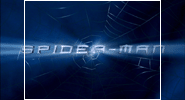
After the introduction of anamorphic systems such as CinemaScope, the standard academy ratio of 1.37:1 was widened. This was simply a matter of masking the top and bottom of a standard academy frame to produce a ratio of 1.85:1 called Widescreen. It is the standard screen format used in cinemas today.
DIGITAL TELEVISION

Digital Television was introduced in 2001 providing the viewer with a more enhanced picture and sound quality than previously available. One of the most interesting features of Digital Television is the shape. Movies shown in the cinema are filmed in a variety of large screen ratios, but the most common is Panavision 2.35:1. When these movies are shown on TV or VHS tape they do not appear the way they were shown in the cinema. This is because the TV aspect ratio is smaller than the ratios in the cinema, as shown by the diagram on the left. Digital Television has a ratio of 1.78:1 or 16:9 as it is commonly known. This ratio was chosen to be the best compromise to show widescreen movies on television.
(see http://www.dvdaust.com/aspect.htm)
Comic books are able to adjust the size of their panels more easily than film. One panel can be in one aspect ratio, the next panel in a differnt one. This is unusual in films.
The comic strip which was known for three things: historical approach, excellence in art work, and its rejection of the “bubble” for text. The text appears as innocuously as possible in order to avoid detracting from the art.
Historical Material
Both the comic and the film deal with a relationship between Prince Valiant, a Viking, and King Arthur. Historically it is debated whether King Arthur ever existed or if he did when he lived. There are a number of theories about him:
(1). He is a pagan god who has been “humanized” after the introduction of Christianity. This is thought to have happened to other deities who became “kings” For example Lir, a sea god became King Lear
(2) Some argue for a tie to the star Arcturus in Bootes the Bear Driver. Arthur is sometimes referred to as “bear man”.
(3) may come from a Roman source meaning plow man
The problems here are often linguistic in that there are a number of languages being spoken in Great Britain, the dominant language family being Celtic, a language family once very wide spread in Europe. Vincingetorix is one of the people Caesar fights in Europe and is a Celtic name.
Celtic is divided into
Anglo Saxon, a Germanic language, arrives shortly therafter
The earliest record of Arthur is in a Welsh poem called Gododdin (circa 594) which puts Arthur at that time or earlier, although there is some question whether the passage in which he appears is a later interpolation. He continues to flit across manuscripts until his appearance in Geoffrey of Monmouth’s Historia Regum Britaniae in 1130’s – a very fictionalized history which established the person of Arthur as he has come to be known.
The tale spread rapidly to France and then Europe, possibly because the Norman invasion and conquest of Britain in1066 reawaken interest in the history of the islands
The Arthurian stories (romances) develop and add the appearance of the Knights of the Round Table and the stories of the various Knights. Ultimately Chretin de Troyen, Mallory and Tennyson will all be involved in writing about Arthur and the Knights of the Round Table, with Mallory’s version being the inspiration for T.H. White’s The Once and Future King which ultimately becomes the stage hit Camelot which then becomes a film. Another example of CROSS OVERS between media.
In the film, Mordred is replaced by Sir Brack as the enemy of Arthur and Camelot
In the comic, the historical accuracy is more to the stories than anything historical
Now the VIKINGS
The Age of the Vikings is generally considered to be from 793-1066. The Vikings (a word probably meaning “bay people” (Vik in Reykjavik) or possibly from a word meaning “raider” or “pillager”) traveled broadly from Scandinavia as far as North Africa, Russia, Constantinople and even Canada leaving settlements in Iceland and Greenland . Used often for sea going Scandinavian populations is often used for all Scandanivians at the time.
The language they spoke, Norse, is Scandanavian and only distantly related to Celtic – both of them, along with Germanic being Indo European.
Christianity appears about the 10th or 11th Century
Since the story has Valiant, a Viking already Christian, the likelihood of dealing with Arthur is rather remote!
AFTER THE FILM
The film is shot in Cinemascope - a wide screen process which allows for many visual effects, many of which are panoramas. The film makes use of this is showing wide shots of landscapes. It also plays with using side of screen as a marker of danger. The Abbey and other "safe" places appear on the left with the sea on the right in the establishing shot, whereas the castle in Scandia held by Sligon reverses the situation.
In addition the film allows for more things to be seen in different environments. When Valiant is attacked, he is in a clearing in the center of the frame. The sides of the frame are in a woodsy tangle with intertwined vines and branches. It is in these branches that the Viking soldiers appear who will sieze Valiant. To have these contexts (clearing and brambles) in one frame in a 1.66:1 aspect ratio would be far to crowded.
Wide screen allows for more things to happen in the frame which alters the editing process and results in a different rhythm. This is generall a major problem when the film is shown in "pan and scan".
Consider the use of the wide screen in the joust sequences (observe the length of the lance before Valiant is struck); the party at the palace which shows many activities at once; the panoramic views of the countryside; and the battle sequences.
What relationship does the film bear to the comic strip Very little! The very things that make the comic different – drawing style, lack of “balloons” are the very things that don’t translate well into film. As far as historical accuracy is concerned it is difficult to discuss historical accuracy when the 2 main characters are fictional or baring that, not alive at the same time!
What is clear is that Vikings did not have horned helmets. So at least the film must give up any claim to historical accuracy in the costuming. Horned helmets of a ritual variety are attested some 2,000 years earlier.
The film does attempt to deal with scenes of the court in colorful ways which are probably meant to duplicate something of the art style, but even that is probably better handled in Camelot.
The outdoor scenes are meant to look dramatic and spectacular, and the exterior views of Camelot are as well. The establishing shots of the Viking ships also seem to hint at something about the art work.
It is only in the use of the wide screen photography that there is an attempt to match the artistic nature of the drawings with the photography of the film. Note that the film acknowledges the drawing by opening with images of the Valiant strip.
In terms of plot, the film is not complex and rather predictable. The film becomes a kind of action/adventure film with a reasonable performance by Wagner physically, although the script fails to develop any real depth about the knight squire relationship, obligations and duties. They are more or less blatantly stated and reflect only in the confusion about Valiant’s relationship with Alena and Sir Gawain’s involvement in the farce. It does allow the introduction of a "Tristan and Isolde" motif (also associated with the round table knights, as evidenced by the introduction of Sir Tristam.
The script makes overt the question of duty to Arthur over duty to father, but without any real involvement on the character’s part. It tends to be brought in in such a way that that characters can mouth the idea.
There are some flaws in the script (how does Sir Brack know that the ring is a symbol to be used to lure Valiaant home? Where do the Vikings go after they tie Valient up (so that Alena can rush in and not see that the Black Knight is Sir Brack)). What is the film about?
Certainly the most obvious dichotomy in the film is us vs. them at several levels.
(b) the film is clear that there is an opposition between being whatever Arthur’s culture is and other cultures. It is impossible at that time to talk about Britain, England or Scotland. The political situation is radically different than what we know today. The Viking age is said to end in 1066, which is about 12 years after the death of the real Macbeth – there are many comments about Vikings being stupid and not knowing things (about how to become a knight, not impersonating a knight – or at least not being totally aware. Even so at the end the Viking is welcomed into the fold as clearly other outsiders have, but always on Arthur’s terms.
(c) Christian vs. pagan. Christian Vikings are saved by Christian English from pagan Vikings. (Christianity unties unlike people).
Not only is there discussion about the cross (which marks Valiant as Christian) but it turns up as a symbol behind Arthur’s chair, and as a mode of execution by the Pagans of Christian Vikings.
The first appearance of Aleta (Janet Leigh) surrounded by a halo of light and the remarks about being in heaven and Aleta being an angel are clearly meant for the Christian iconography. Sir Gawain also comments on her "angel like qualities.